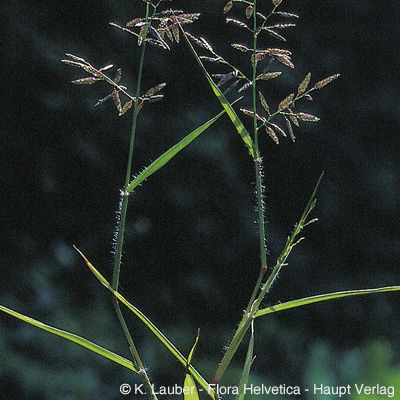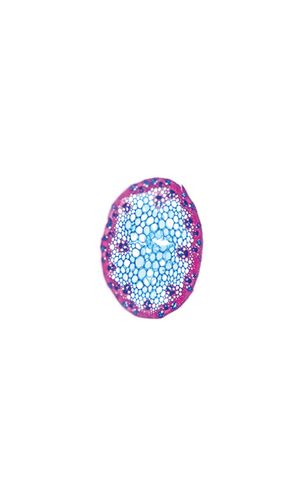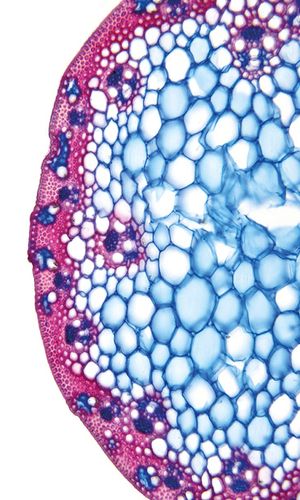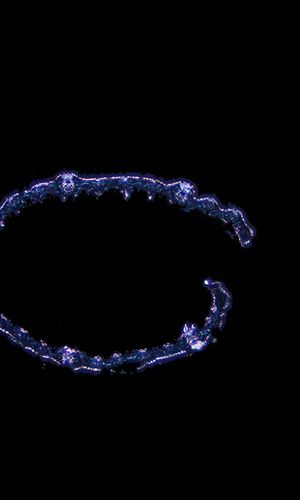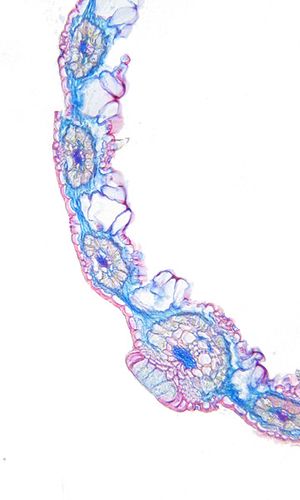Eragrostis minor Host
1017270
Species
ISFS : 152000
Checklist : 1017270
ISFS : 152000
Checklist : 1017270
Contains :
Synthesis
Species description (© Flora Helvetica 2018)
10-30 cm hoch, knickig aufsteigend. Blätter 1-4 mm breit, Rand mit gelblichen Sitzdrüsen. Anstelle des Blatthäutchens ein Haarkranz. Blattscheiden meist behaart. Blütenstand eine ausladende Rispe, untere Äste zu 1-2. Ährchen 5-10 mm lang, 1,5-2 mm breit, flach, 8-15blütig, ohne Grannen. Untere Hüllspelze etwas kürzer als die obere, ungefähr von gleicher Gestalt wie die Deckspelzen, diese 1,5-2 mm lang, violett getönt. Karyopse oval, 0,7-0,8 mm lang.Flowering period (© Flora Helvetica 2018)
7-9Habitat and distribution inside Switzerland (© Flora Helvetica 2018)
Wegränder, zwischen Pflastersteinen, Ödland / kollin-montan / CHWorld distribution (© Flora Helvetica 2018)
Ursprünglich mediterran (?)Ecological indicator (© Landolt & al. 2010)
1+33-44+4.t.2n=20,30,40Status
IUCN status
Least concernNational Priority
K - no national priorityInternational responsibility
K - noneConservation
Threats
Anatomy
Summary of leaf anatomy (German)
Obere Epidermiszellen gleich gross wie untere. Epidermis mit Papillen. Epidermiszellen aussen verholzt. Leitbündel freistehend. Leitbündelhülle nicht verholzt.Summary of stem anatomy (German)
Umriss rund oder oval. Leitbündel in einer Reihe. Kleine Interzellularen, oft dreieckig. Epidermiszellen verholzt. Chlorenchyma in peripheren runden, ovalen oder rechteckigen Gruppen.Description
Culm-diameter 0.5-1 mm, center full, radius of culm in relation to wall thickness 1:1. Outline circular with a smooth surface. Culm-center full, containing unlignified cells. Epidermis-cells thick-walled all around. Large vascular bundles arranged in one peripheral row. Chlorenchyma in round, oval, square or rectangular groups. Sclerenchyma in a large, peripheral continuous belt (> 3 cells). Cells thick-walled. Small sclerenchymatic sheath with 1-2 cells around vascular bundles. Largest vessels in vascular bundles in lateral position. Largest vessel in the bundle small, < 20μm. Cavities (intercellulars) between parenchyma-cells present, small, often triangular. Distinct cavities (intercellulars) in the protoxylem area of vascular bundles.Distribution map
Habitat and distribution inside Switzerland
CHWorld distribution
Ursprünglich mediterran (?)Ecology
Life form
Therophyte
Habitats
Milieux Phytosuisse (© Prunier et al. 2017)
Habitats © Delarze & al. 2015
 | 7.2.2 - Steinpflaster-Trittflur (Saginion procumbentis) |
 | 8.2.3.4 - Kalkreicher, trockener Hackfruchtacker (Eragrostion) |
bold
Dominant species, influencing the appearance of the habitat
 Character species
Character species
 Less strictly linked to a specific habitat
Less strictly linked to a specific habitat
Ecological indicator values by © Landolt & al. (2010)
| Soil factors | Climatic factors | Salinity tolerance | |||
|---|---|---|---|---|---|
| Humidity Value H | 1+ | Light Value L | 4 | Salinity Index | -- |
| Reaction Value R | 3 | Temperature factor T | 4+ | ||
| Nutriments value N | 3 | Continentality K | 4 | ||
- Ecological values legend
Humidity Value H 1 very dry 1+ dry 2 moderatly dry 2+ moist 3 medium wet 3+ wet 4 very wet 4+ soggy 5 submerged or underwater f plants living in running water u mostly submerged plants v partly submerged, partly floating plants w humidity moderately variable (± scale of 1-2) w+ highly variable humidity (scale exceeding ± 2) Reaction Value R 1 Very acid (pH 2.5-5.5) 2 acid (pH 3.5-6.5) 3 lightly acid to neutral (pH 4.5-7.5) 4 neutral to basic (pH 5.5-8.5) 5 basic (pH 6-5 -> 8.5 Nutriments value N 1 very low in nutrients 2 low in nutriments 3 medium-poor to medium-rich in nutrients 4 rich in nutriments 5 very rich in nutriments Salinity tolerance 1 halotolerant 3 halophyle Light Value L 1 very shady 2 shady 3 lighted areas 4 luminous 5 highly luminous Temperature factor T 1 alpine to nival stages (from the treeline to the snowline) 1+ suprasubalpine and upper subalpine levels (pine and larch forests) 2 subalpine level (coniferous forests without beeches up to the upper limit of spruces) 2+ lower subalpine and upper mountain stages 3 mountain level (beech and silver fir forests, in the central Alps Scots pine forests) 3+ lower mountain and upper hill levels 4 hill level (mixed deciduous oak forests) 4+ hot places, hill level 5 very hot places, hill level (only in the hottest places, typical of southern Europe) Continentality K 1 Atlantic (high air humidity, very low temperature variations, mild winters) 2 Sub-Atlantic (high air humidity, low temperature variations, relatively mild winters) 3 sub-Atlantic to subcontinental (average air humidity, moderately variable temperature, slightly low winter temperatures) 4 subcontinental (low air humidity, large temperature variations, rather cold winters) 5 continental (very low air humidity, very large temperature variations, cold winters)
Water dependency
| Rivers | |
| Calm water | |
| Ground water |
Nomenclature
Accepted Name (Checklist 2017)
Eragrostis minor Host
Vernacular name
Deutscher Name :
Kleines LiebesgrasNom français :
Petite éragrostideNome italiano :
Panicella minoreMatch with other reference books
| Relation | Nom | Book | No |
|---|---|---|---|
| = | Eragrostis minor Host | Checklist 2017 | 152000 |
| = | Eragrostis minor Host | Flora Helvetica 2001 | 2717 |
| = | Eragrostis minor Host | Flora Helvetica 2012 | 2894 |
| = | Eragrostis minor Host | Flora Helvetica 2018 | 2894 |
| = | Eragrostis minor Host | Index synonymique 1996 | 152000 |
| = | Eragrostis minor Host | Landolt 1977 | 298 |
| = | Eragrostis minor Host | Landolt 1991 | 261 |
| = | Eragrostis minor Host | SISF/ISFS 2 | 152000 |
| = | Eragrostis minor Host | Welten & Sutter 1982 | 2344 |
= The taxon corresponds to the accepted taxon (Checklist 2017)
< The taxon is included in the accepted taxon (Checklist 2017)
> The taxon includes (among others) also the accepted taxon (Checklist 2017)
< The taxon is included in the accepted taxon (Checklist 2017)
> The taxon includes (among others) also the accepted taxon (Checklist 2017)
Status
Native status
-IUCN list of endangered species (© Walter & Gillett 1997) : No
Status on national Red List 2016
IUCN status:
Least concern

Additional information
IUCN criteria: --
Status on regional Red List 2019
| Biogregraphic regions | Status | IUCN criteria |
|---|---|---|
| Jura (JU) | LC | |
| Mittelland (MP) | LC | |
| Alpennordflanke (NA) | LC | |
| Alpensüdflanke (SA) | LC | |
| Östliche Zentralalpen (EA) | LC | |
| Westliche Zentralalpen (WA) | LC |
- Legend
EX Extinct RE Regionally Extinct CR(PE) Critically Endangered, Probably Extinct CR Critically Endangered EN Endangered VU Vulnerable NT Near Threatened LC Least Concern DD Data Deficient NE Not Evaluated NA Not Applicable
National Priority Species List Status
| No national priority or international responsability |
Protection status
| No international, national or cantonal protection |
- Disclaimer
InfoFlora compiles information on protected species as accurately as possible, taking it from the respective cantonal laws. In some cases, however, it was not possible to use the plant names as listed in the original text, but an interpretation of their taxonomy or nomenclature was necessary. The exact meaning of the categories „completely protected“ and „partially protected“ differs among the cantons.
InfoFlora cannot guarantee that the information on the protection status is correct and complete. In case of doubts, we recommend to look up the texts of the respective cantonal law.
Status by sector of activity
| Agriculture-related environmental objectives : | more informations | |
| Forest management environmental objectives : | more informations |
